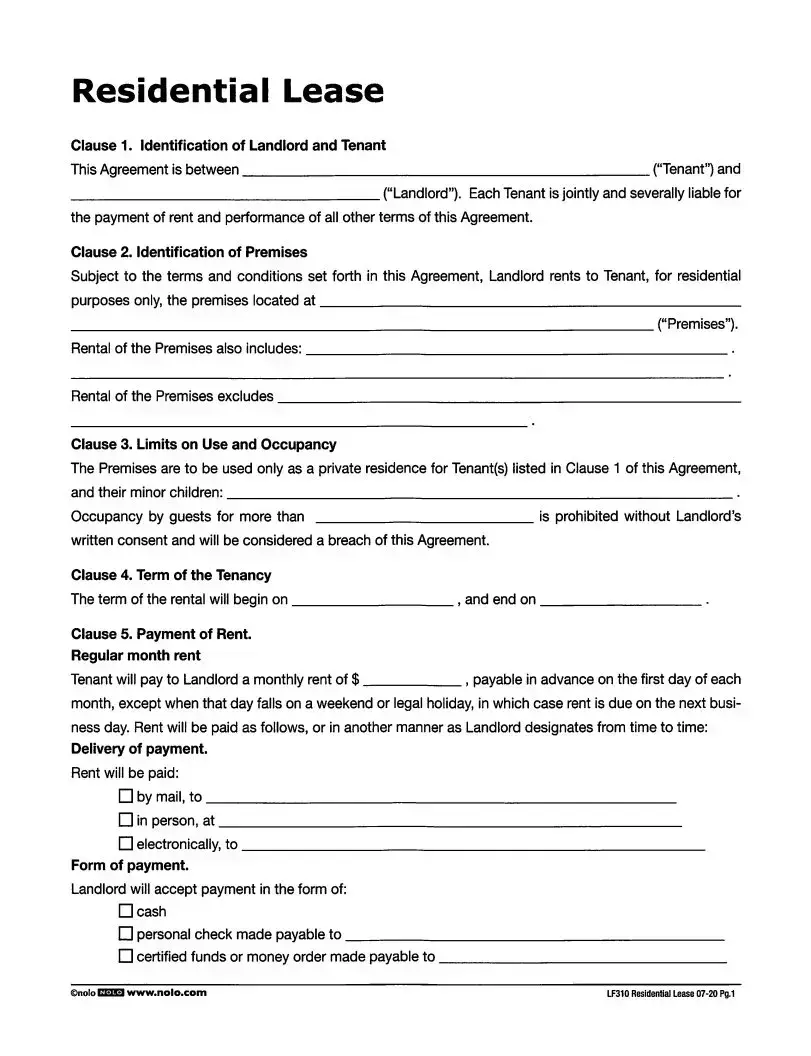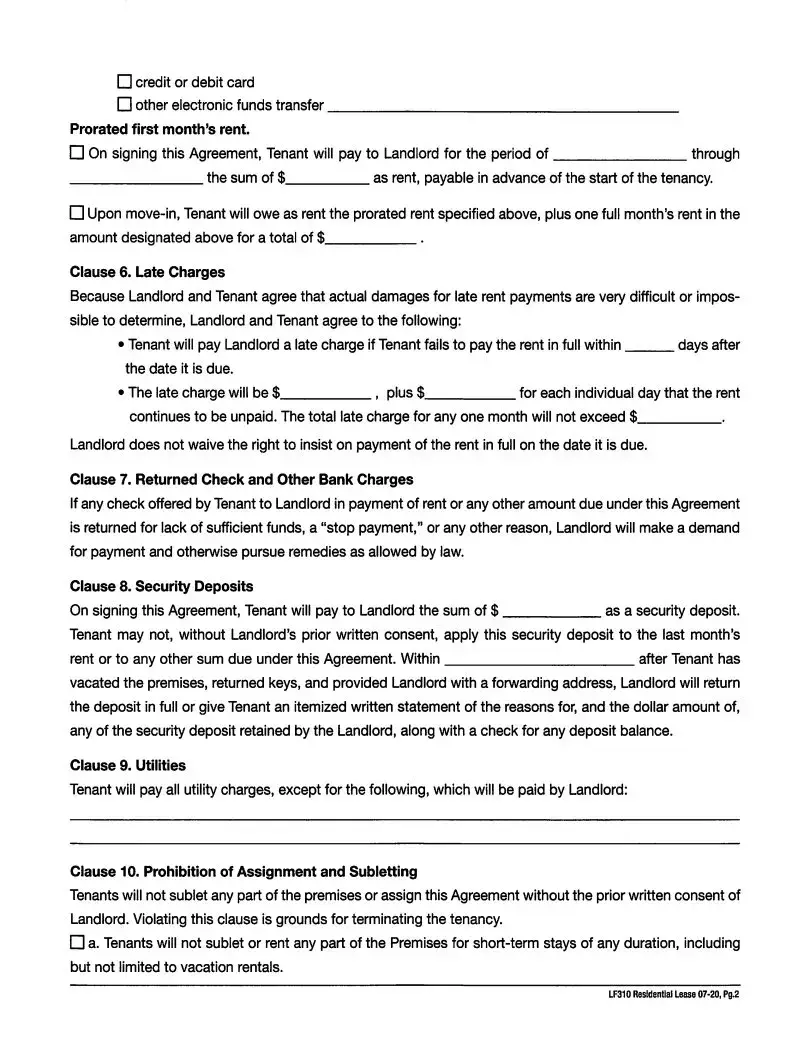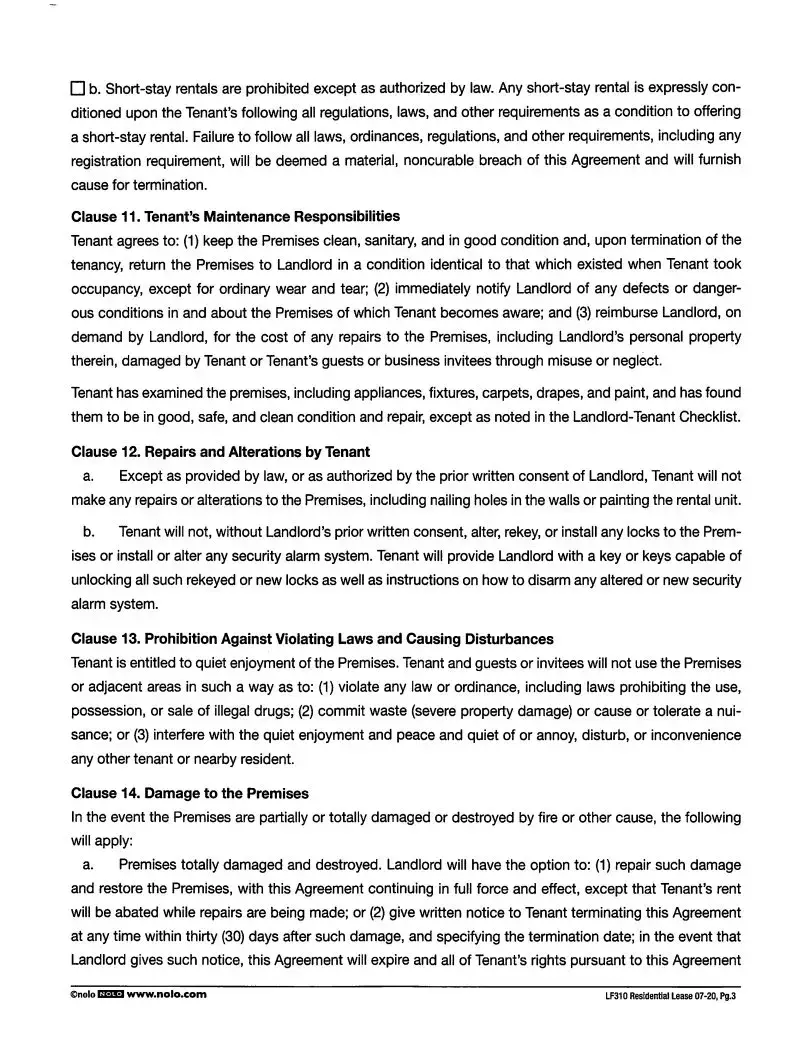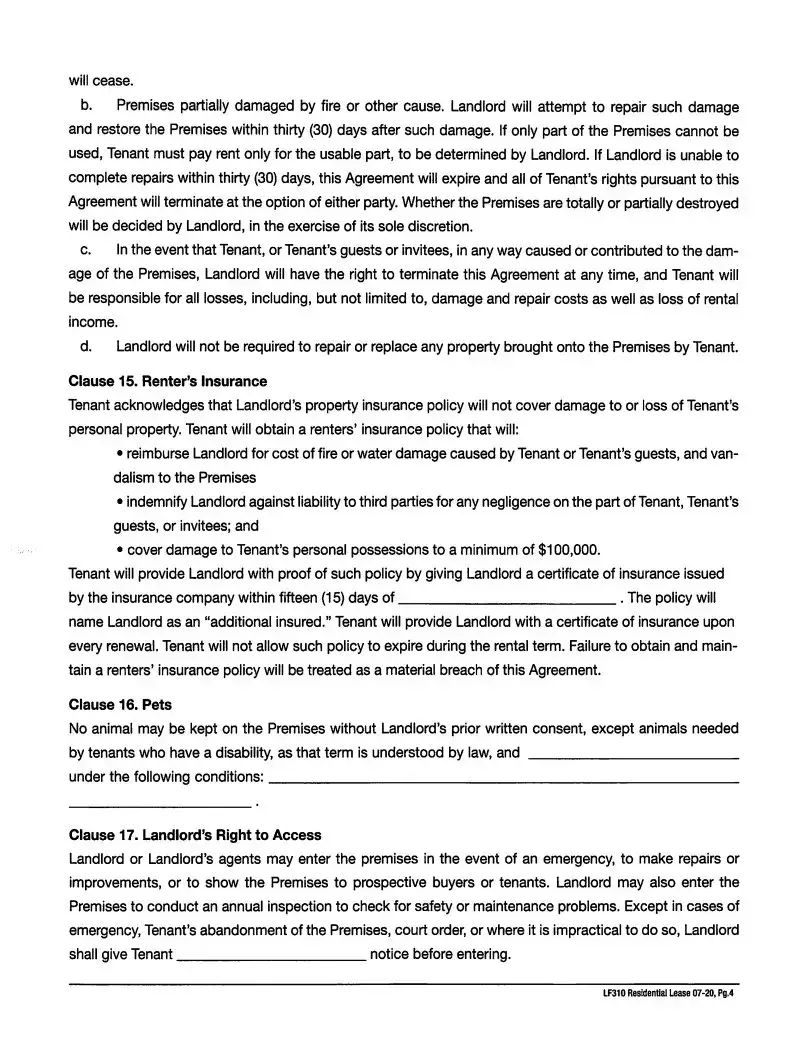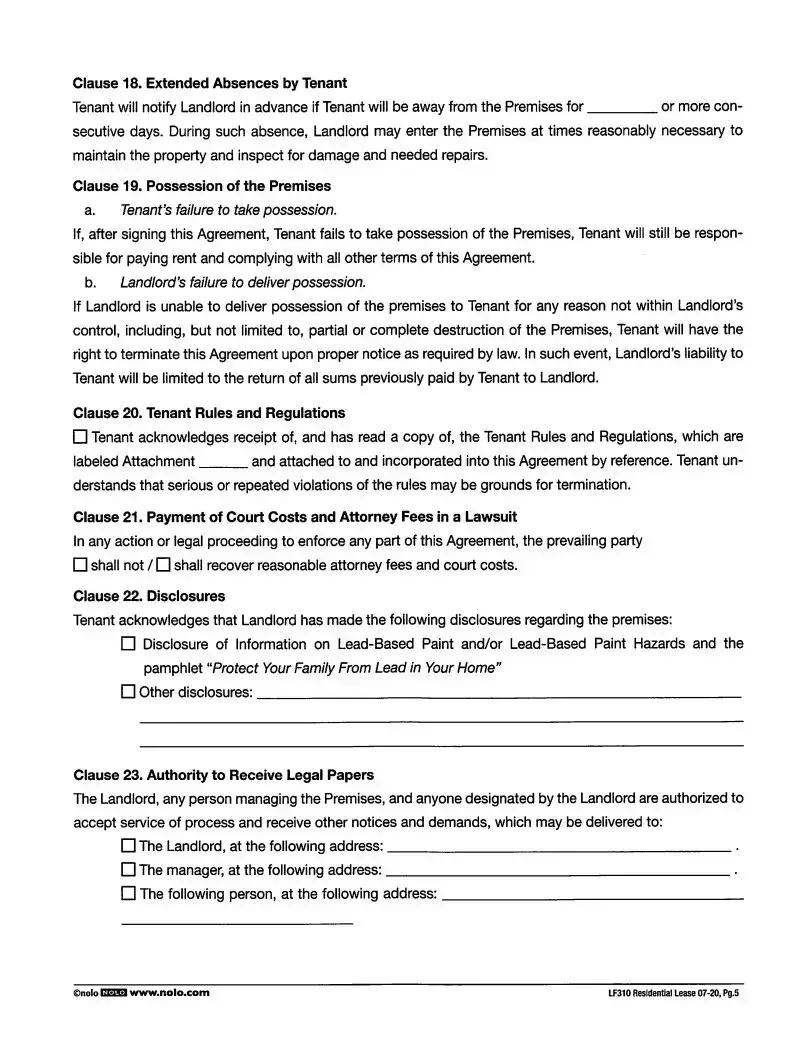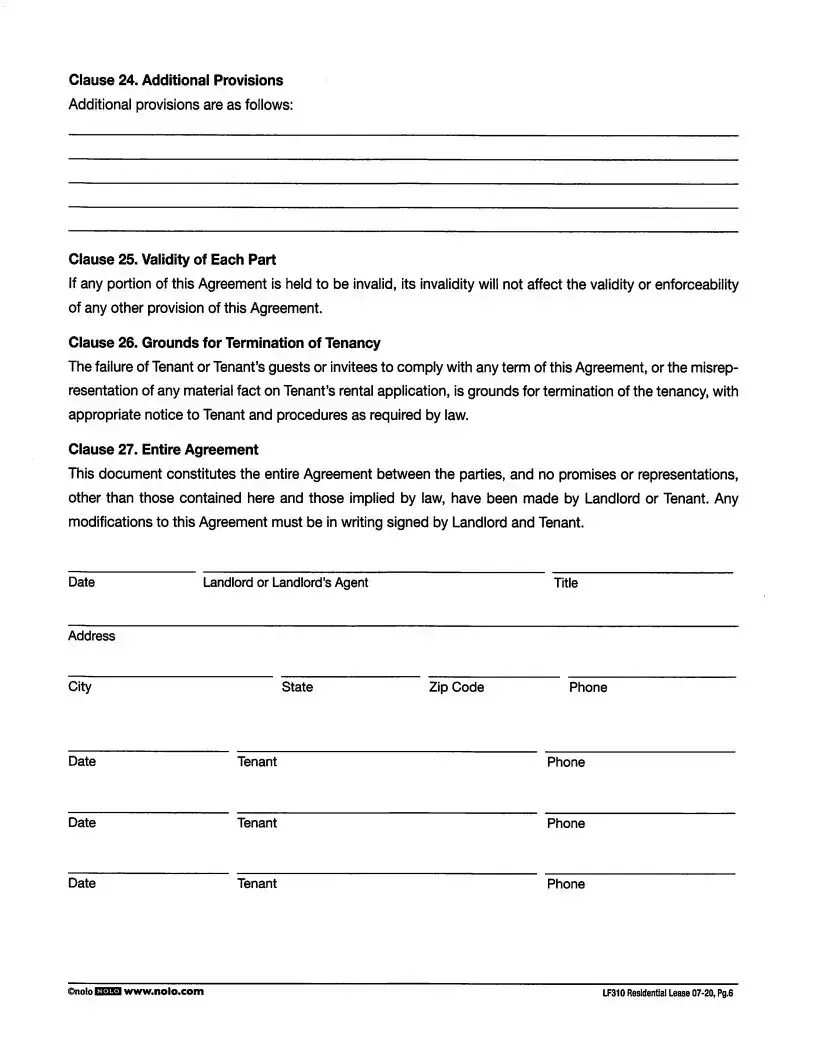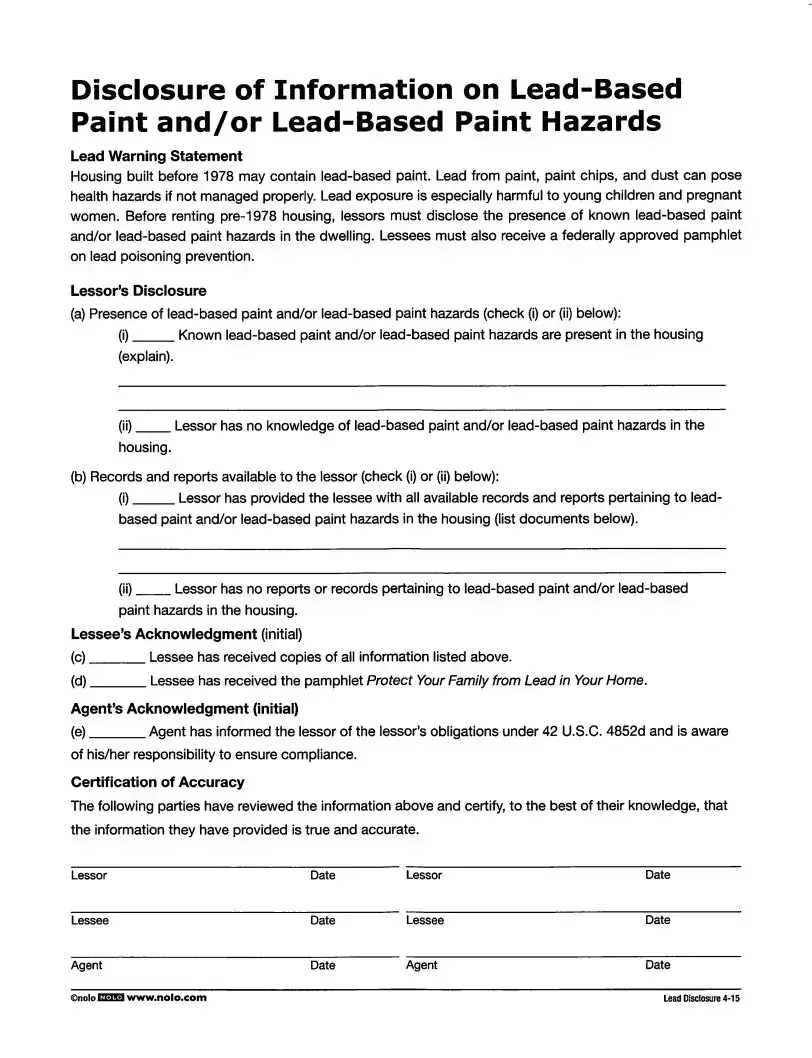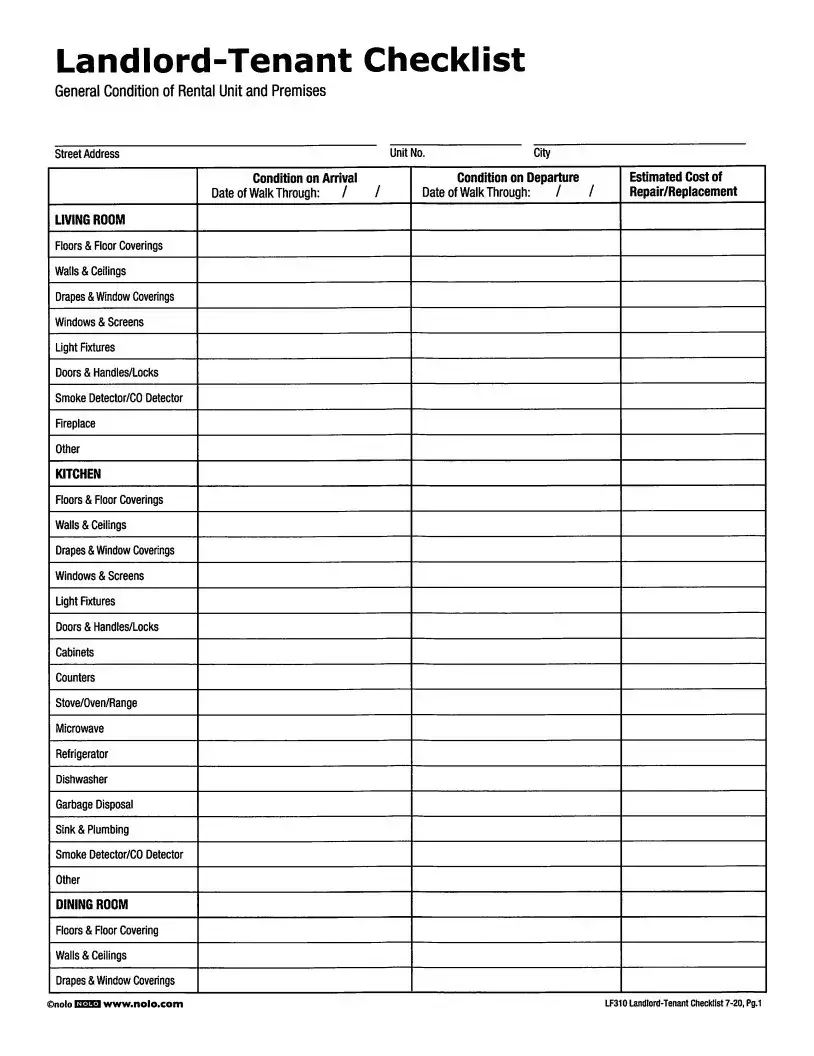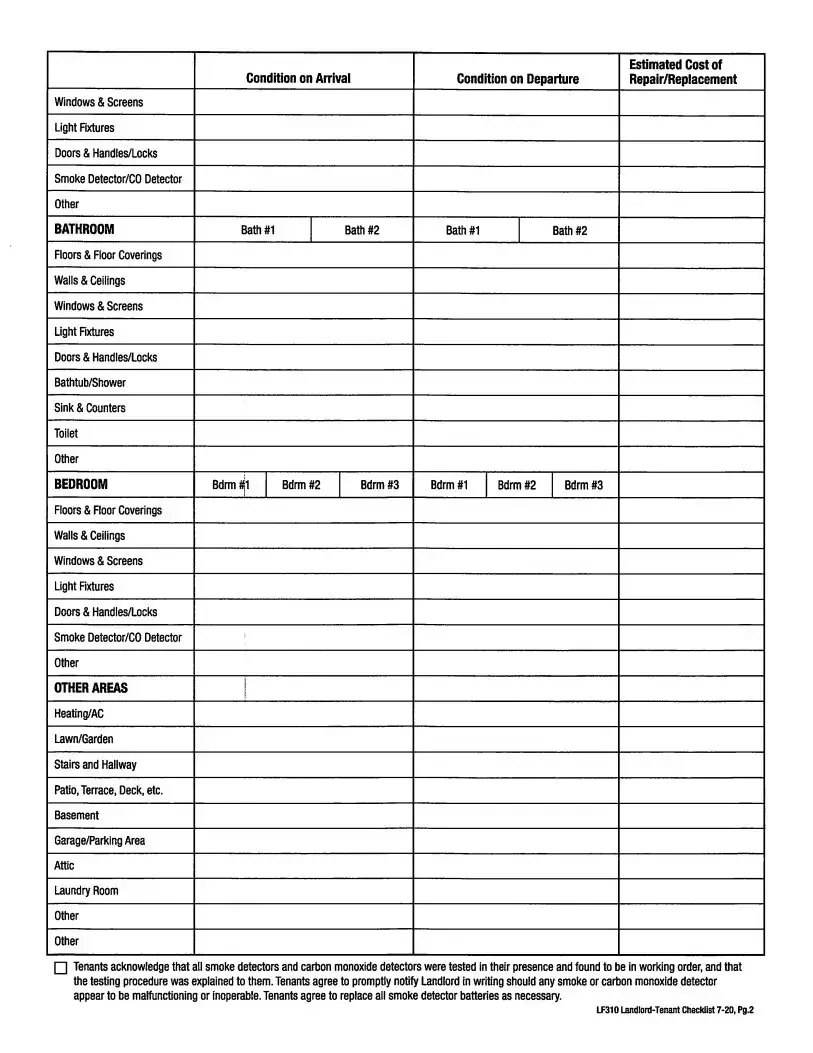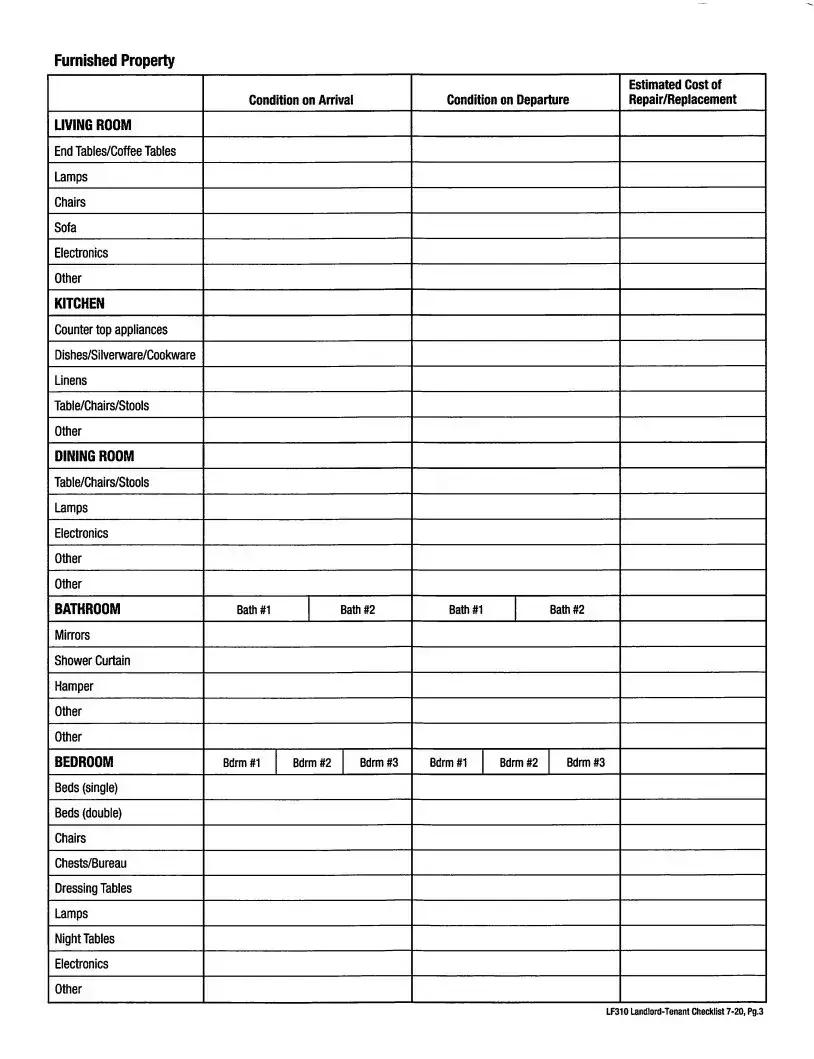Instructions on Utilizing Lf310 Residential Lease
Completing the Lf310 Residential Lease form requires careful attention to each section to ensure all necessary information is accurately provided. Once you are ready to fill out the form, carefully review each clause and prepare the required information. Gather details about the landlord, tenant(s), property, and payment terms, as these will guide you through the filling process.
- Begin with Clause 1, where you will identify the Landlord and Tenant. Enter the full names of both parties in the designated spaces.
- In Clause 2, provide the complete address of the Premises being leased. Be specific and ensure accuracy.
- For Clause 3, clearly state any minor children who will be residing at the Premises. Remember that occupancy limits apply to guests without prior consent from the Landlord.
- Moving on to Clause 4, indicate the start date and end date of the tenancy. This sets the duration of the lease.
- Clause 5 requires you to specify the monthly rent amount. Fill in the total rent due, payment schedule, and any specific delivery method for the payment.
- Detail the form of payment to be accepted by the Landlord, such as cash, check, or electronic transfer.
- Calculate and write the prorated first month’s rent, including the total amount due at move-in.
- In Clause 6, outline the late charges that will be imposed for delayed payments, including the timing and amounts.
- Next, in Clause 7, mention that returned checks will incur certain charges. It may be beneficial to note potential remedies as allowed by law.
- For Clause 8, enter the amount for the security deposit that the Tenant will owe upon signing the lease.
- In Clause 9, clarify which utilities the Tenant will be responsible for and specify those the Landlord will cover.
- Finally, in Clause 10, reaffirm the terms regarding assignment and subletting to ensure that all parties understand these restrictions.
